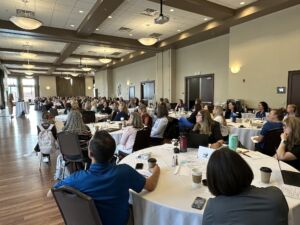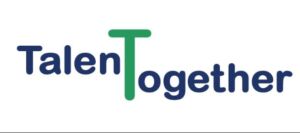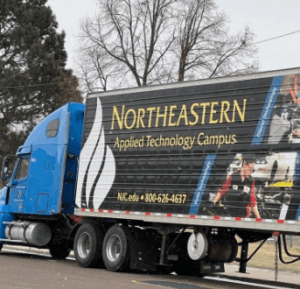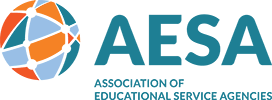Showcasing the Transformative Impact of Educational Service Agencies
April 28, 2025
Background
AESA was honored to be featured in the April 2025 issue of School Administrator, the flagship publication of AASA, The School Superintendents Association. This national spotlight underscored the critical role that Educational Service Agencies (ESAs) play in strengthening the educational ecosystem across the United States.
The article highlighted how ESAs meet the complex and evolving needs of schools, educators, and students. Although the published article included mention of several exemplary programs, the full breakout stories from these ESAs were not included in the final print. We believe these stories are too valuable to go untold and reflect the depth and creativity of ESA-driven solutions. We’re excited to share them with you now:
 The Perry Community School District, nestled in the heart of Iowa, serves a vibrant and culturally diverse community of 7,800 residents, including approximately 1,700 students. For years, the district was celebrated for fostering inclusivity and embracing its rich cultural diversity. However, in January 2024, Perry faced an unimaginable tragedy when it became the site of a devastating school shooting.
The Perry Community School District, nestled in the heart of Iowa, serves a vibrant and culturally diverse community of 7,800 residents, including approximately 1,700 students. For years, the district was celebrated for fostering inclusivity and embracing its rich cultural diversity. However, in January 2024, Perry faced an unimaginable tragedy when it became the site of a devastating school shooting.
In the wake of this heartbreaking event, the district’s partnership with Heartland Area Education Agency (AEA) became a lifeline. Heartland AEA’s response was immediate, resolute, and grounded in compassion. Their unwavering support extended far beyond crisis management, laying the groundwork for recovery, resilience, and hope for the Perry community.
Within the critical first 72 hours, Heartland AEA’s leadership team mobilized to coordinate an organized and effective response. Their primary focus was assisting the district with reuniting students and families and delivering essential social-emotional and behavioral health services to address the trauma. These swift, collaborative actions helped stabilize the community during an extraordinarily volatile period.
As the initial shock began to subside, efforts shifted toward long-term recovery. Together with district administrators, human resources personnel, mental health professionals, and members of the Heartland AEA team, a multidisciplinary recovery leadership group was formed. This team systematically addressed the evolving needs of students, staff, and families, ensuring continuity in both education and emotional care.
In addition to supporting Perry, Heartland AEA sought to share their experience and insights with others. At AESA’s 2024 Summer Leadership Conference, they presented lessons learned to inform best practices for other educational service agencies (ESAs). Their presentation emphasized the importance of proactive violence prevention measures, recognizing early warning signs, and fostering crisis preparedness. Their transparency and willingness to share have provided a framework for other ESAs to strengthen their response protocols.
Heartland AEA’s actions following the Perry crisis highlight the critical role ESAs play in supporting schools and communities during and after traumatic events. Their evidence-based approach, sustained commitment, and dedication to knowledge-sharing have positioned them as a vital resource in advancing school crisis prevention and response strategies.
 Collaboration is at the core of educational excellence. A shining example of this partnership is CESA University, an annual state-wide event that unites professional learning providers from all 12 Cooperative Educational Service Agencies (CESAs) for two days of impactful learning, sharing, and growth.
Collaboration is at the core of educational excellence. A shining example of this partnership is CESA University, an annual state-wide event that unites professional learning providers from all 12 Cooperative Educational Service Agencies (CESAs) for two days of impactful learning, sharing, and growth.
Allen Betry, Agency Administrator of CESA 9, emphasizes the importance of this collaboration, stating:
"Wisconsin CESAs have been instrumental in the success of our annual state-wide 'CESA University.' This event brings all 12 CESAs together for two days of learning, sharing, and growing. This year’s focus was around professional learning standards and the current state initiatives CESAs are leading. This important event also allows for CESA collaboration and sharing of best practice strategies and services that are provided to the school districts in the 12 different ESA regions."
CESA University is more than just a professional development conference—it is a platform for innovation and shared excellence. CESA leadership and the various staff members who provide professional learning across the state come together to address key priorities like state initiatives, professional learning standards, technology integration, and the implementation of best practices across multiple content areas. By bringing CESAs together, the event leverages cross-agency, cross-discipline, job-alike, and CESA-specific groups to foster collaboration, tackle challenges, align strategies, and create efficiencies that benefit schools across all 12 regions.
The strength of CESA University lies in its ability to inspire and empower CESA staff members, who then carry this momentum back to the districts, staff and students they serve. The skills, knowledge, and shared experiences gained ripple out, improving educational outcomes and strengthening Wisconsin's entire education system. This collective commitment to learning and innovation supports all Wisconsin students, no matter where they live, to have access to the highest quality education.
Through events like CESA University, Wisconsin CESAs demonstrate what can be accomplished when educational service agencies partner together with a shared mission. The success of this initiative stands as a testament to the dedication, leadership, and collaboration that define the critical role ESAs play in advancing education.
 As technology continues to shape education, high-speed internet access remains more critical than ever. Educational Service Agencies (ESAs) play a crucial role in helping schools and communities gain this valuable connectivity, ensuring that students, educators, and families stay connected in an increasingly digital world. The Imperial County Office of Education (ICOE) has answered this call through the California K-12 High Speed Network (K12HSN), a transformative program providing reliable, high-speed internet access to schools statewide.
As technology continues to shape education, high-speed internet access remains more critical than ever. Educational Service Agencies (ESAs) play a crucial role in helping schools and communities gain this valuable connectivity, ensuring that students, educators, and families stay connected in an increasingly digital world. The Imperial County Office of Education (ICOE) has answered this call through the California K-12 High Speed Network (K12HSN), a transformative program providing reliable, high-speed internet access to schools statewide.
Administered by the California Department of Education with ICOE serving as the Lead Education Agency (LEA), K12HSN’s mission is clear: to ensure that California’s educators, students, and staff have access to a reliable network that supports teaching, learning, and academic achievement.
What is K12HSN?
K12HSN connects schools across California to the California Research and Education Network (CalREN), a high-speed, statewide network that links 14 hub sites and 83 92 K-12 node sites. In addition to supporting K-12 schools, CalREN connects:
- 159 Public Library Jurisdictions
- 101 University of California campuses
- 24 California State University campuses
- 111 Community Colleges
- 3 private universities
This advanced network serves as an educational “Intranet,” offering unparalleled connectivity and digital resources for California’s educational community.
Leading with Innovation and Impact
For over two decades, K12HSN has been at the forefront of advancing digital access in education in California. The K12HSN provides a range of services, including network connectivity, network support, DDoS mitigation services, K-12 school connectivity data, and E-rate filing support. These services ensure that schools have the necessary infrastructure to support modern educational needs and protect against cyber threats.
As technology continues to shape education, high-speed internet access remains more critical than ever. With K12HSN, ICOE is committed to ensuring that California’s schools have the tools they need to thrive in a connected world. By providing reliable, cutting-edge connectivity, K12HSN is paving the way for a future where every student has the opportunity to succeed.
 In recent years, Michigan has faced a significant teacher shortage, a challenge that has impacted the quality of education across the state. However, the Talent Together program, an innovative partnership led by all 56 Michigan Intermediate School Districts (ISDs), is addressing this issue head-on. By removing barriers to the teaching profession, the program is creating a sustainable pipeline of qualified educators.
In recent years, Michigan has faced a significant teacher shortage, a challenge that has impacted the quality of education across the state. However, the Talent Together program, an innovative partnership led by all 56 Michigan Intermediate School Districts (ISDs), is addressing this issue head-on. By removing barriers to the teaching profession, the program is creating a sustainable pipeline of qualified educators.
Talent Together unites the expertise and resources of Michigan’s ISDs, organizations with a deep understanding of local educational needs. Together, they offer flexible, cost-free pathways for individuals to become certified teachers while continuing to earn an income.
The program is open to Michigan residents with at least a high school diploma, including paraeducators, substitute teachers seeking certification, and career changers. Accepted applicants enroll in a degree or certification program through a partnering college or university. While completing their coursework, participants gain paid, full-time experience working in local schools.
A key component of Talent Together is its apprenticeship model. Candidates spend a year working alongside an experienced mentor teacher, receiving practical, hands-on training that ensures they are classroom-ready.
ISDs: Supporting Teacher Success
ISDs play a critical role in Talent Together’s success. They match candidates with accredited preparation programs, cover full tuition and fees, and provide comprehensive support, including rigorous mentorship and training. ISDs also help candidates balance coursework and teaching responsibilities, ensuring they remain on the path to certification.
Since its inception, Talent Together has strengthened Michigan’s educator pipeline by:
- Reducing the financial burden of teacher preparation,
- Increasing representation of teachers of color,
- Expanding opportunities for individuals in rural and remote areas to become educators.
By removing financial and logistical barriers, the program is making the teaching profession accessible to a diverse range of candidates.
Beth Gonzalez, Deputy Superintendent of Wayne RESA, highlights the program’s significance: “It could not be more important to remove barriers to the teaching profession. This initiative is an example of our state coming together to prepare future teachers in innovative ways.”
Naomi Norman, Superintendent of Washtenaw ISD and President of the Talent Together consortium, adds, “Talent Together supports teaching candidates from all walks of life—especially community members of color—to lead our next generation of students.”
Talent Together is a shining example of how collaboration and innovation can address critical challenges in education. By leveraging the strengths of ISDs, the program is building a sustainable solution to Michigan’s teacher shortage and ensuring every student has access to high-quality educators. As the program continues to grow, it holds the promise of transforming the teaching profession and shaping the future of education across the state.
 In the rural and agricultural landscape of Northeast Colorado, a pressing question loomed over the region’s economic future: how would the area keep moving? Recent data revealed that many semi-truck drivers in the region were nearing retirement, creating an urgent need for skilled workers to step into these critical roles.
In the rural and agricultural landscape of Northeast Colorado, a pressing question loomed over the region’s economic future: how would the area keep moving? Recent data revealed that many semi-truck drivers in the region were nearing retirement, creating an urgent need for skilled workers to step into these critical roles.
To address this shortage, the Northeast Colorado Board of Cooperative Educational Services (BOCES), in collaboration with key partners, launched a new Commercial Driver’s License (CDL) training program. This initiative is part of a larger effort to create career pathways that align with the specific needs of local employers, ensuring they have access to a skilled workforce in high-demand industries.
"Northeast Colorado is largely rural and agriculturally focused," said Tamara Durbin, Northeast Colorado BOCES Executive Director. "Transportation is vital to the area, especially in the agricultural industry." The CDL training program aims to meet this growing demand, ensuring the region has enough qualified drivers to keep the transportation industry thriving.
The CDL training program is the result of a collaborative effort among several key partners. Northeast Colorado BOCES, along with its 12-member school districts, provides funding and support for students participating in the program. Northeastern Junior College (NJC) supplies the instructor and curriculum, with in-person classes held at Holyoke High School in Holyoke, CO, and Akron High School in Akron, CO. Additionally, the Colorado Education Initiative (CEI) and Colorado Succeeds (CS), two Colorado-based consulting agencies, have been instrumental in developing this and other career pathways, ensuring the program effectively meets the region’s workforce needs.
"The program is open to any eligible student in our 12-district region," Durbin explained. "Students need to be 18 years old or turn 18 by the time they complete the training."
The first CDL training classes began in January 2024, with 16 students graduating in the spring. The fall session kicked off in August 2024, with 18-20 students expected to attend.
"It’s truly a great program," Durbin added. "It addresses a real need and provides students with a valuable opportunity, ensuring greater safety on the job and a sustainable, higher wage for young people."
With funding secured through the 2025-2026 school year, the CDL training program is poised for continued growth. Grants have provided the foundation for its development, with the potential for an even greater impact on Northeast Colorado’s future.
By equipping students with the skills and credentials they need, Northeast Colorado BOCES is steering the region toward a more prosperous tomorrow—one truckload at a time.
 In the heart of Kentucky, a groundbreaking initiative is revolutionizing education. Two educational service agencies—the Kentucky Education Development Cooperation (KEDC) and the Western Kentucky Education Cooperative (WKEC)—have teamed up with the Ed-Fi Alliance to create the Kentucky Data Exchange (KYDX). This platform is built specifically for Kentucky’s schools, giving educators practical tools and insights to make better decisions for students.
In the heart of Kentucky, a groundbreaking initiative is revolutionizing education. Two educational service agencies—the Kentucky Education Development Cooperation (KEDC) and the Western Kentucky Education Cooperative (WKEC)—have teamed up with the Ed-Fi Alliance to create the Kentucky Data Exchange (KYDX). This platform is built specifically for Kentucky’s schools, giving educators practical tools and insights to make better decisions for students.
Collaboration for Student Success
The KYDX project is a true collaboration. The Ed-Fi Alliance, known for helping schools across the country turn data into meaningful insights, is providing the technical expertise to ensure the system works seamlessly. KEDC and WKEC, with their deep ties to local schools, ensure the platform is “created in the Bluegrass, for the Bluegrass!” By gathering input from teachers, counselors, and school leaders, KYDX delivers a complete view of each student by pulling together attendance, test scores, health data, and behavior information. This makes it easier for schools to act on what matters most.
Dr. Rachel Holbrooke, KEDC Director of Data Services, emphasizes the collaborative spirit driving this initiative: “The KYDX project is built on the belief that when schools, districts, and stakeholders come together with the right tools, real change is possible. By leveraging Ed-Fi Open-Source Technology for data interoperability, we're empowering educators by helping them harness the power of near real-time data to build the visualizations they need to make timely, data driven decisions. At the heart of our work, we realize that it’s not just about technology—it’s about collaboration, actionable insights, and a shared commitment to improving student outcomes across Kentucky.”
The need for KYDX is clear. During the 2022-2023 school year, nearly one in three Kentucky students was chronically absent. KYDX tackles this issue head-on by identifying trends and predicting absenteeism before it becomes a problem. With the insights provided by KYDX, educators can act early, offering targeted support to keep students engaged and in the classroom.
A Pilot with Purpose
Phase One of the KYDX initiative launched in September 2024, with six school districts serving as pilot sites. Backed by ongoing support and guidance from KEDC and WKEC, these districts are testing the platform and providing feedback to refine its functionality. The collaborative process ensures KYDX meets the real-world needs of Kentucky schools. By June 2025, the program will expand, inviting more districts to join this transformative journey.
Paving the Way for a Brighter Future
The collaboration between KEDC, WKEC, and the Ed-Fi Alliance is setting a new standard for how data can drive educational progress. KYDX not only addresses today’s challenges but also lays groundwork for long-term success. With these organizations leading the way, Kentucky’s educators are equipped with the tools they need to help every student thrive.
Your Story Matters: Highlighting the Impact of ESAs Nationwide
These breakout stories showcase the extraordinary ways ESAs are innovating, collaborating, and leading to meet the needs of their communities. Each example reflects the powerful impact of local solutions designed with students, educators, and schools at the center. As AESA continues to champion the work of ESAs nationwide, we are proud to share these stories that exemplify resilience, creativity, and leadership. We also know there are countless more stories across the country that deserve to be heard. If your ESA has an innovative program or initiative making a difference, we invite you to share your story with us. Together, we can continue to highlight the critical role ESAs play in shaping the future of education.
Archives
- December 2025
- November 2025
- October 2025
- September 2025
- August 2025
- July 2025
- June 2025
- May 2025
- April 2025
- March 2025
- February 2025
- January 2025
- December 2024
- November 2024
- October 2024
- September 2024
- August 2024
- July 2024
- June 2024
- May 2024
- April 2024
- March 2024
- February 2024
- January 2024
- November 2023
- October 2023
- September 2023
- August 2023
- July 2023
- March 2023
- July 2022
- June 2022
- July 2021
- June 2021
- November 2020
- March 2020
- December 2019
- November 2019
- October 2019
- August 2019
- May 2019
- April 2019
- March 2019
- February 2019
- November 2018
- September 2018
- August 2018
- June 2018
- May 2018
- April 2018
- March 2018
- February 2018
- January 2018
